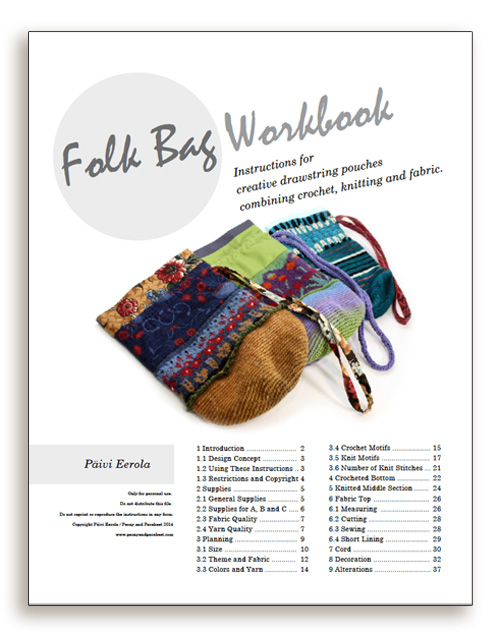About Art and Knitting
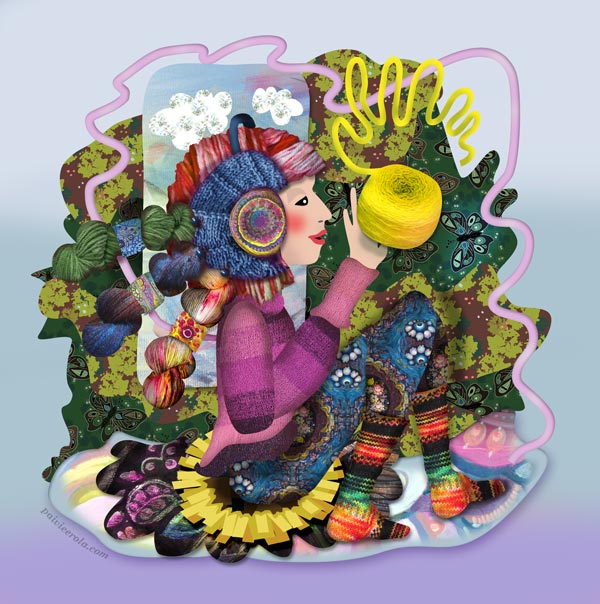
Knitting Through Childhood
I learned to knit before school when I was about five years old. Before that, my older sisters had taught me to crochet, but it wasn’t enough. “There will be much more stitches, and they get dropped easily,” they said. But I was determined. I sat in the kitchen with a ball of dark green light-weight yarn and thin needles that had duck heads in the other end. I wrapped the yarn around the needles and was sure that I would figure it out by myself. It must have been an endearing sight because my sisters gave up and taught me to knit.
After that, I was unstoppable. My mother taught me to make socks and mittens, and when I went to school, I learned more from there. Our local library had a couple of shelves of knitting books, and I borrowed them regularly. As a teenager, I bought a knitting machine and made a sweater in a couple of days.
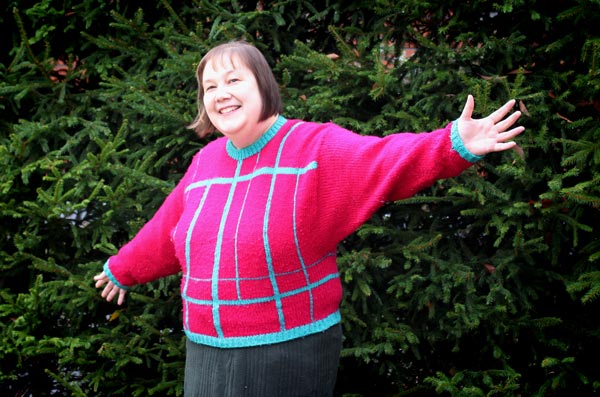
The good thing in the 1980s fashion is that the knits were so big that we never grow out of them!
Late-Night Knitting
Like art, knitting has always been with me. But even if I have had times in my life when I haven’t created art, I have never stopped knitting. No matter what crisis I had, how busy at work I have been, there has always been time and energy for knitting. It’s still like breathing – in, out – knit, purl.
As a child, I had a phase when I dreamed about being a textile artist. But the older I have become, the more I have realized that the connection between knitting and art-making must be looser for me. In the late evenings, when the working day is over, I say good-bye to the artist in me. Then it’s time to stop producing and start consuming. I browse online yarn stores, their Instagram accounts, and Ravelry.com – the ultimate database for knitters – and plan my next projects. I watch knitting podcasts on Youtube and knit obsessively as long as I can stretch the night. I don’t think about art, and I don’t feel like an artist. By following or adapting a pattern that someone else has written makes sure that I don’t have to think but just knit.
But strangely, for each big painting, I need a lot of knitting. It’s my way of processing all the ordinary so that the extraordinary can come up.
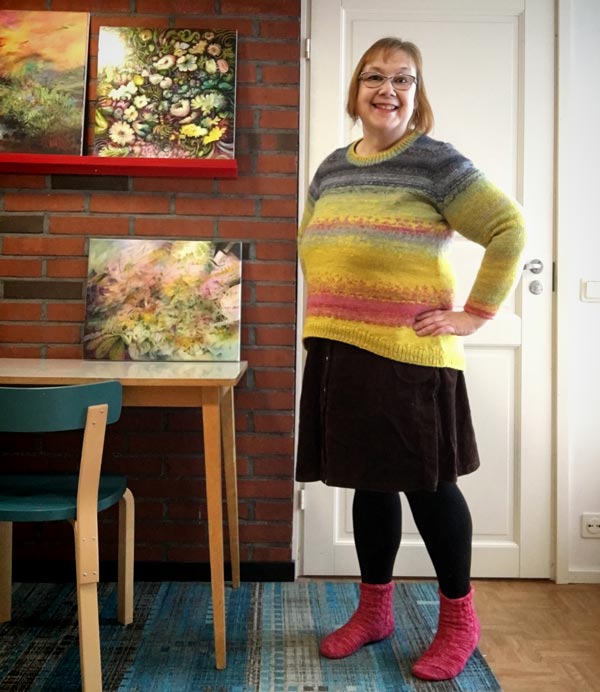
Art and Knitting – Work and Hobby
When I started blogging over ten years ago, my blog was about knitting. At that time, I also sold handmade bags called folk bags and wool that I produced in co-operation with my friend and a few farmers. There might still be some of you who have followed me since then. Thank you for sticking around!
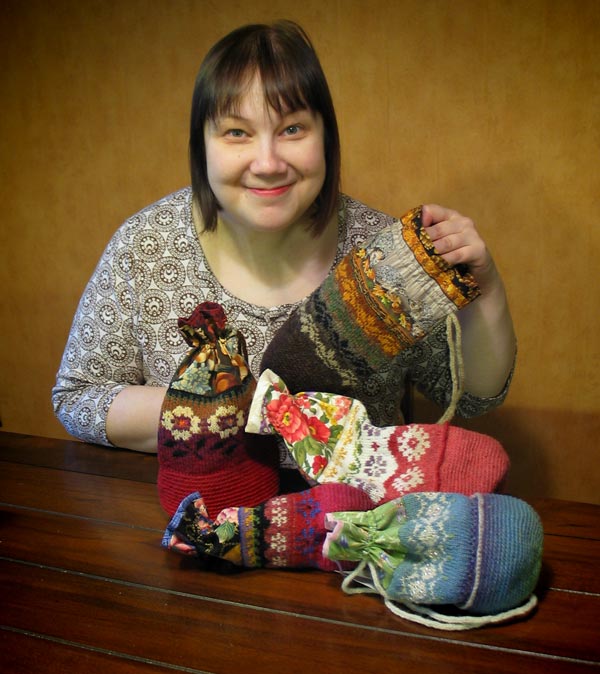
Later, I wrote a pattern for them. You can purchase it here!
When I grew my artist’s identity, I wanted not to talk about knitting anymore. I needed a hobby, not another job, and I felt that knitting and fine art don’t go so well together in public. People often have a hard time understanding that art can be a real job.
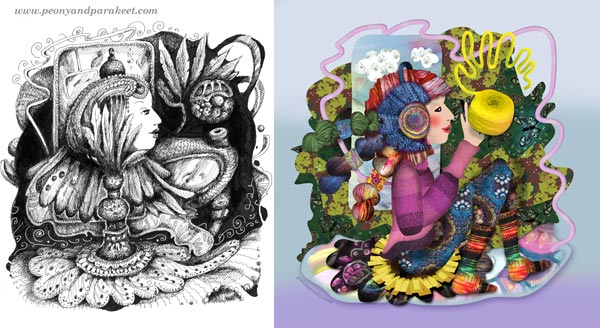
But last year, I decided that it’s time to approach art with greater confidence than before. It has made me more open, and maybe it has added a bit more self-acceptance too. So yes, I am both an artist and a knitter. Art is my work, and knitting is my hobby, but I would not be able to work without the hobby.
Does this make sense to you? Let me know what you think!
Can Fine Artists Craft? Can Crafters Make Art?
In this week’s post, I share my newest painting and other creative projects, and talk about linking art and crafts together.
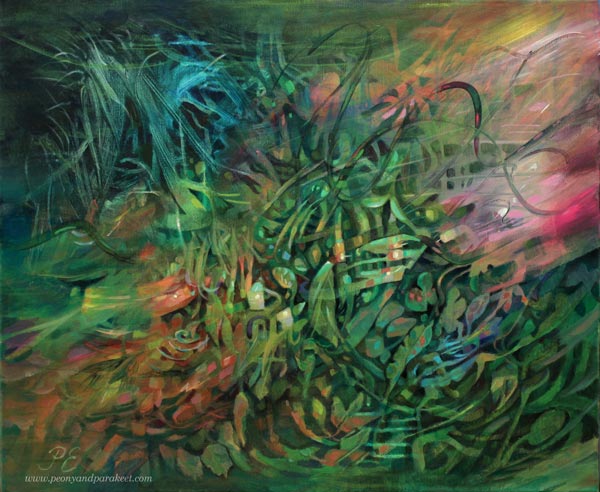
Here’s my new painting called “Elämän nälkä – Hunger for Life.” It’s made in acrylics. and the size is 54 x 65 cm (about 21 x 25,5 inches). I started it before my dog Cosmo passed way, but it feels very timely, expressing how we want to live and survive, even if life is not in our control.
How I Created This Painting
My paintings often start with a specific color in mind, and this one was all blue in the beginning, and the orientation was vertical.
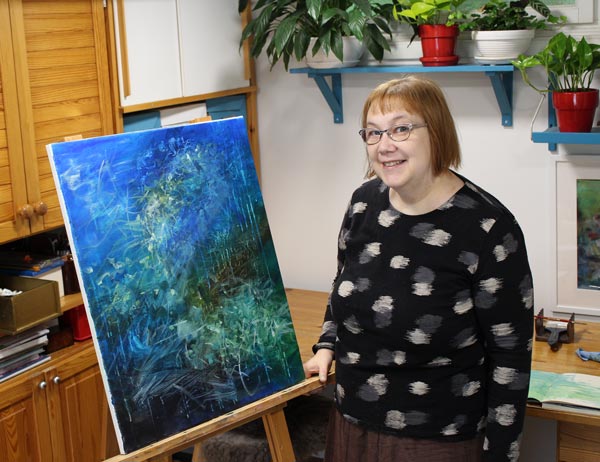
Then I turned it around and added more colors, then turned around again!
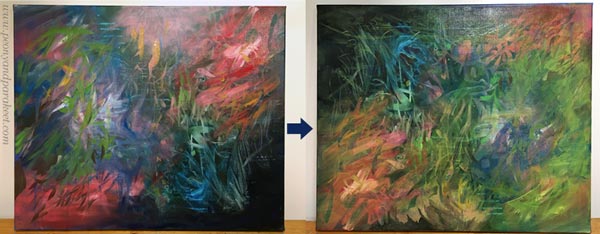
I wanted everything in this piece to be wild and free. It’s enjoyable to paint this way.
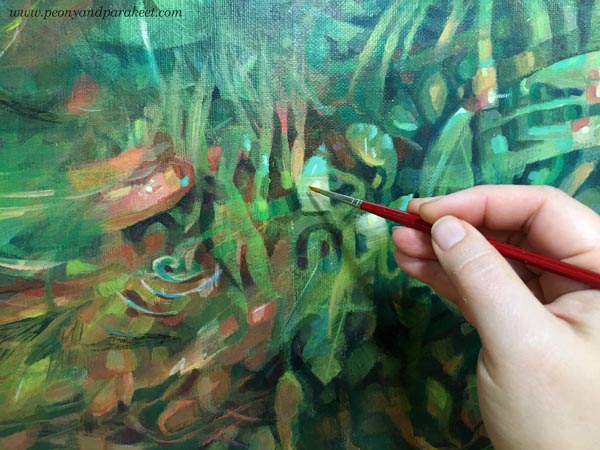
My favorite part of the painting is the top corner. It’s so sinister, and yet, so beautiful!
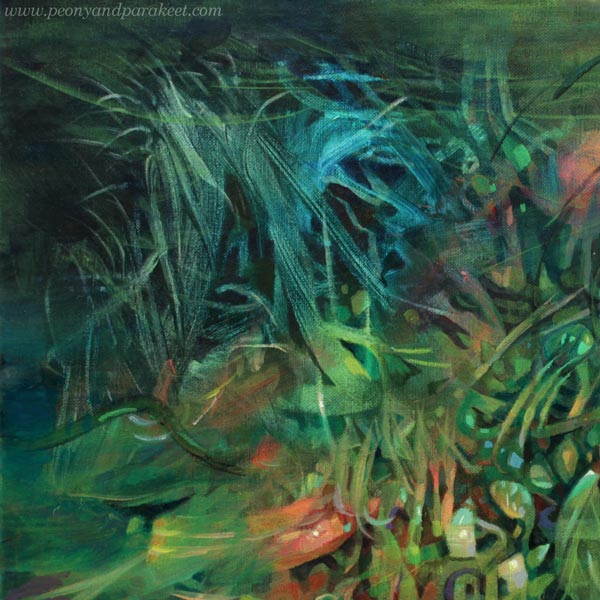
Here’s the whole painting again. I really like this one even if the atmosphere is gloomier than usual.

I always take the final photos before varnishing, because it’s easier to take pictures when the painting isn’t glistening. However, I love how the varnish makes the colors glow.
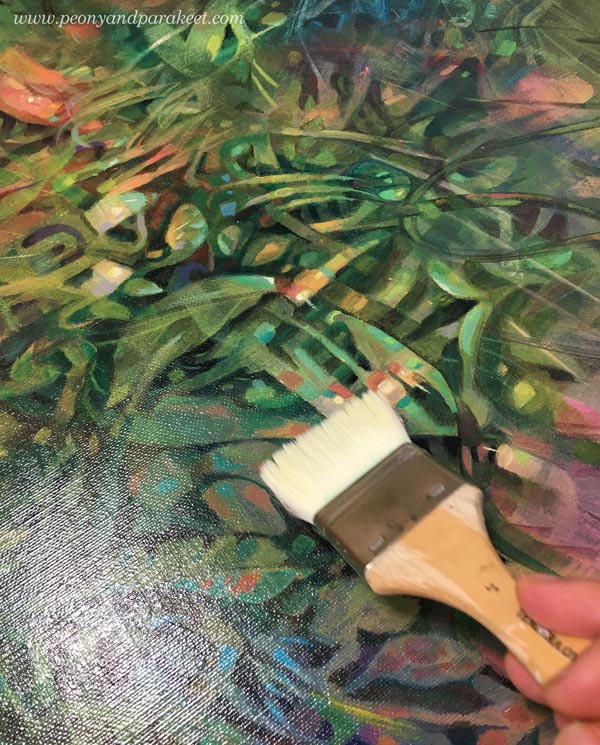
Painting Feels Different from Crafting
For me, creating art is a strange mixture of letting go and paying attention to the tiniest details. It’s like I am the mother and caretaker for my paintings, but can’t fully control the children’s personality and actions.
In my spare time, when quilting or knitting, it’s different. I can feel a sense of control, and I like it a lot. After saying goodbye to Cosmo, I sewed a quilt for Stella. I had the blocks ready, so the project was already half-way. About 20 years ago, I participated a quilt block lottery, where a group of quilters sewed similar kinds of blocks and happened to win them all. I had also sewn some more recently.
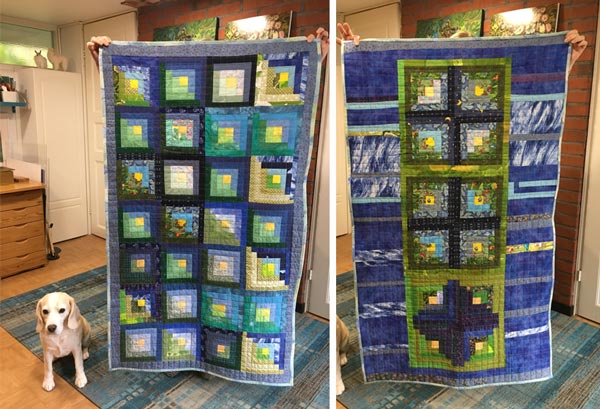
Art Inspiration from Crafting
My relationship for quilting and knitting has changed over the years. About 20 years ago, I thought that crafting is my way of creating art. But the more I got interested in painting and drawing, the less creative it felt. During the past 6 years, art-making and crafting have been strictly separated: visual art is the profession and crafting is the hobby.
This fall, my mindset has changed. I now realize that knitting is a way to give space for the internal processing that my paintings need. When I knit, my subconscious is sketching.
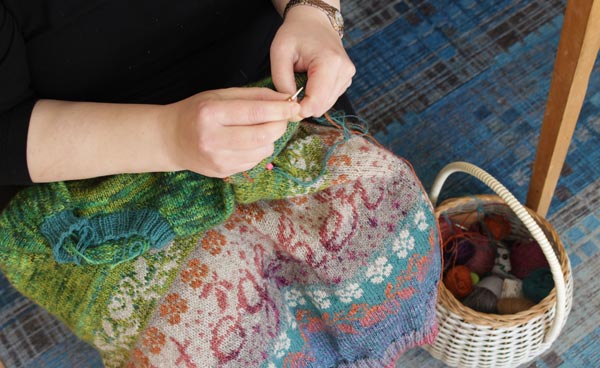
I love stranded knitting with many colors. My current project is Joji Locatelli’s All Together Sweater.
Here’s my current painting in progress. At least in this stage, it has some similarities with the sweater!
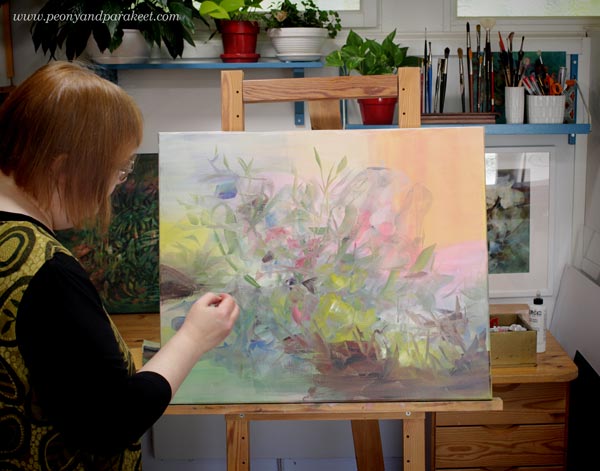
In general, I am more open to inspiration that I get from crafting, and vice versa. I made this quilt for my friend’s puppy.
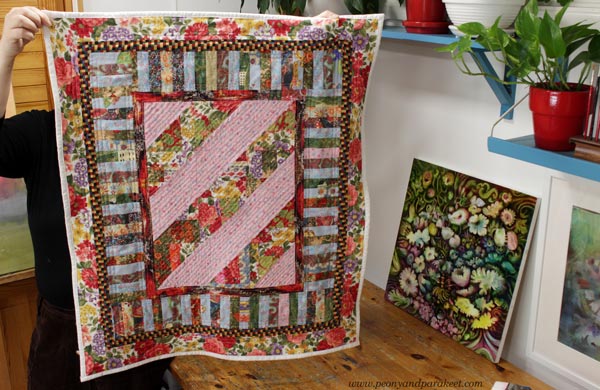
Crafter, Craft Artist, Fine Artist – What’s Your Number One Creative Activity?
Many who create both art and crafts struggle with finding their style. For me, the working solution was to draw a clear line between the two. It made me see what things were missing in my artistic process, and what I needed to practice more. My artistic identity needed this isolation to make a clear hierarchy in what I create.
But now, I feel I can loosen up. Here’s what I wrote on Peony and Parakeet’s Facebook page last week:
“Art makes us more aware of what affects us and how we process it. Sometimes it means that we don’t want to immerse ourselves into something because it would not have a good impact on us. Other times it means that we want more of something because we know we need that. But for me, the most significant thing has been that accidental things happen, and I don’t need to filter everything. Both art and life run through us, and when the stream gets stronger, it will change not only us but our surroundings as well. When we say we want to loosen up, isn’t that what we really mean?”
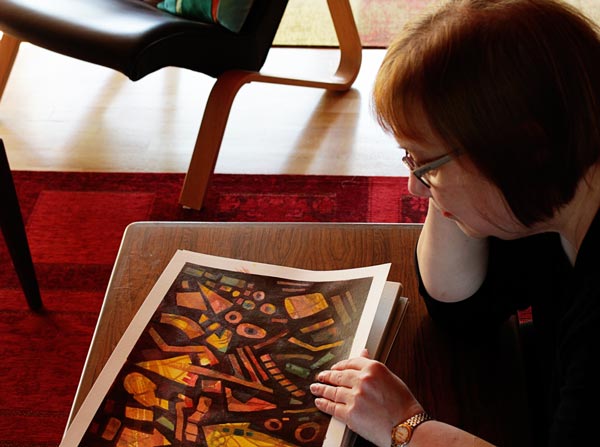
This month, I have done a lot more than just creating canvas paintings. I am working on a new class about abstract art and Paul Klee’s teachings. I have talked about Paul Klee before, but now I am creating a class that translates his teachings to a more expressive style. Hopefully, the class is launching at the end of November, stay tuned!
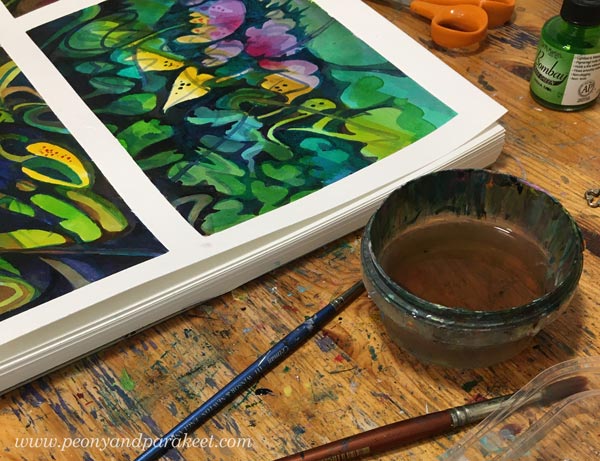
I have also finished an art journaling mini-course for an artist collaboration project. It will be for sale in October – so very soon!
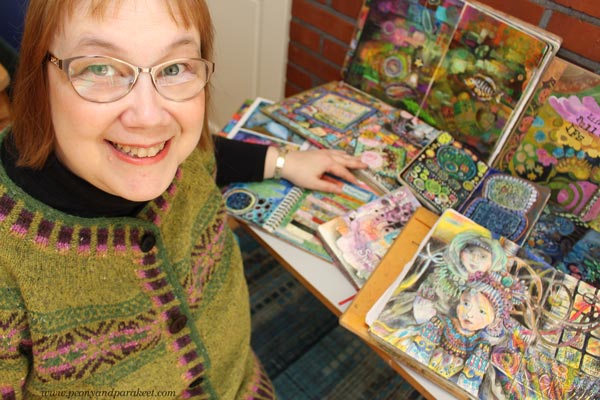
What’s Your Number One Creative Activity?
Here’s how I see myself now: I am a visual artist who creates abstract nature paintings mostly. I process my paintings by knitting, writing, art journaling, and doing daily walks. I live in a midcentury home, and my background is in design. I process my designs by growing plants and quilting. My paintings have design elements, and my designs have elements that are painted.
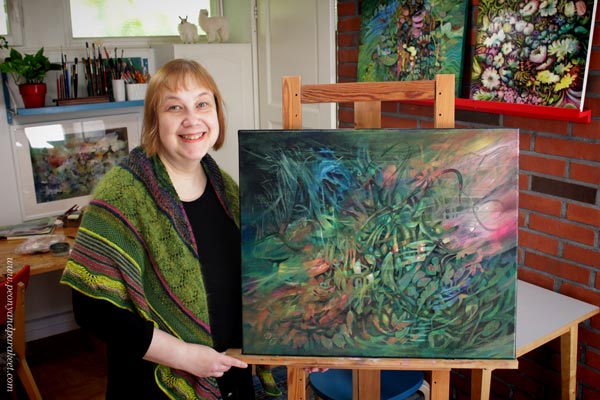
Painting is my number one thing. All the other activities serve it.
How would you define yourself through your creative activities? What’s your number one creative activity?
How to Make Folk Bags
Since 2008, I have had a dream: teaching how to design and make folk bags. When I invented the idea of the folk bag, I drew a sketch. That sketch was the first piece in the pile of documentation gathered for the workbook.
The workbook has 40 pages and about 100 images. You will be guided from the planning to the making of unique folk bags which you can keep, give away or sell.
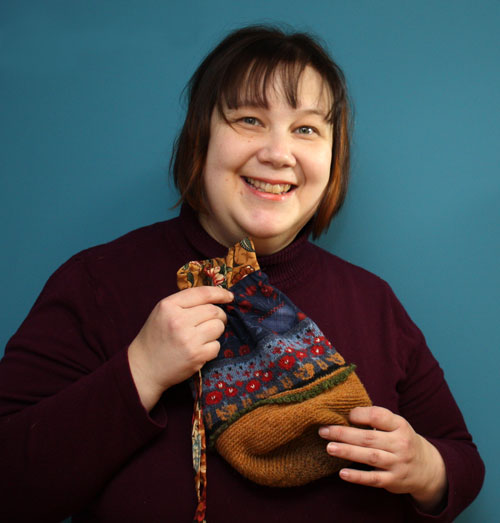
I feel so happy and relieved at the moment!
The book includes instructions for three folk bags: one small with stripes, another large with solid-colored fabrics and third medium with printed fabrics. But the best thing in the workbook is that it guides you how to create unique bags in various sizes. Starting from choosing the theme and fabric and ending with setting the final decorations in place!
Buy the book for 15 euros (about 18.50 USD) here or from my Ravelry store
Writing a Craft Pattern
At first, I should probably give you a warning: I am in the middle of the chaos, this not so organized as my posts usually are! With this post, I invite you to the process of writing a craft pattern. I have had this idea for 6 years and it has become hugely important to me.
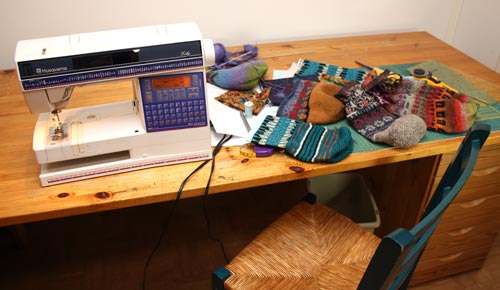
I designed a drawstring pouch which combines yarn and fabric in 2008. I have made tens of those bags, which I call folk bags, during the years and dreamed about writing instructions of how to create them. Within years I have learned a lot of making these bags. What first started a simple idea and simple sketch of a pattern, has become much more. It became clear when I began working with the pattern that I won’t be writing a regular craft pattern. I am writing instructions and formulas about how to design and customize folk bags so that you can make your own unique bags.
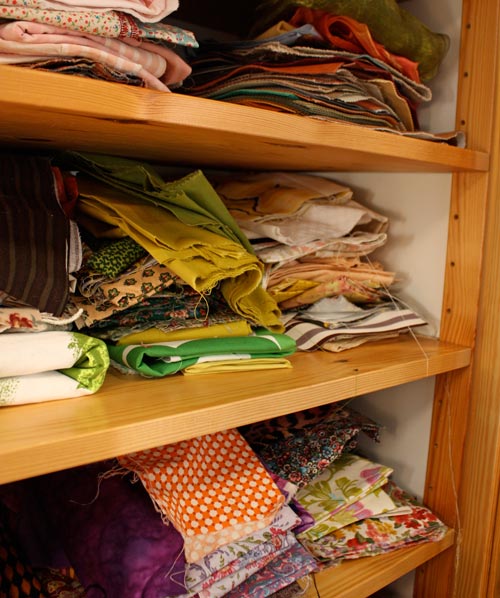
Writing a pattern is not just writing. I have to test each sentence for many times. So I need to actually make more bags while I am writing. Going to the fabric stash in the morning feels as inspiring as grabbing the pens and paints. What I find challenging is to go back and forth from knitting and sewing to writing. I do not know if it was a good idea to make the pattern both in English and in Finnish – and write the both language versions at the same time! Sometimes I get so mxed up that I have to translate the most simple words from English to my mother tongue Finnish! The good thing with working with two languages at the same time is that the instructions get checked much more carefully.
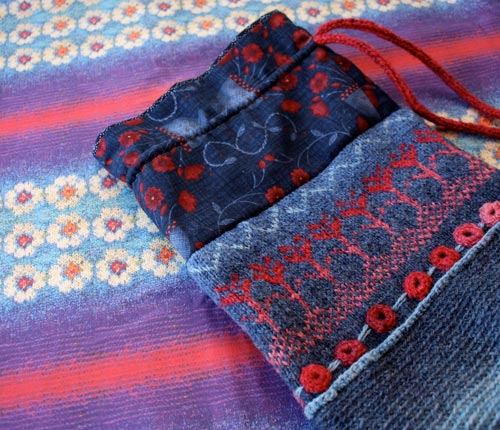
I knew I had taken a lot of photos of my bags during the years. It seemed to be a good thing. All the ideas that I have had and that had been implemented are recorded. Furthermore, I have a special folder in the photo organizing software where they all are. And yes, that’s great. But there are over 500 photos plus the new ones I have took during the writing. I need to pick the best images for each chapter and then process them. There’s still 250 photos to go through and few more to shoot.

After all this, I still have to confess that my heart sings when I am writing the pattern. I hope that with this work I am able to spread more joy than if only I made the bags. I wish that there will be more people experience the joy of both making the bags and receiving them.
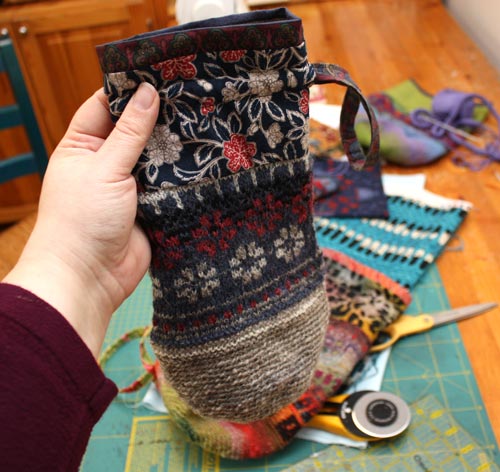
I hope to get the pattern published in this month. I already have finished many chapters and soon I will begin to insert the texts and images to the desktop publishing program. The working title of the pattern is Folk Bag Workbook. It will be available for purchase in my web site and at Ravelry.
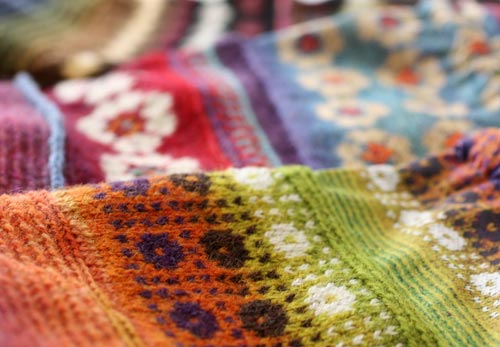
Next week I have more news, also textile related in a way!
